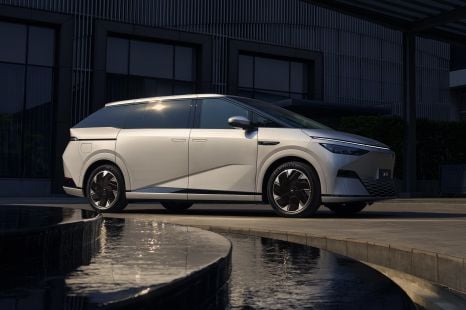

William Stopford
Will 2026 be the year of the people mover in Australia? China seems to think so
6 Hours Ago
Not ready to go electric but want to cut down on your emissions? The Eclipse Cross PHEV gives you electric range in a familiar package.
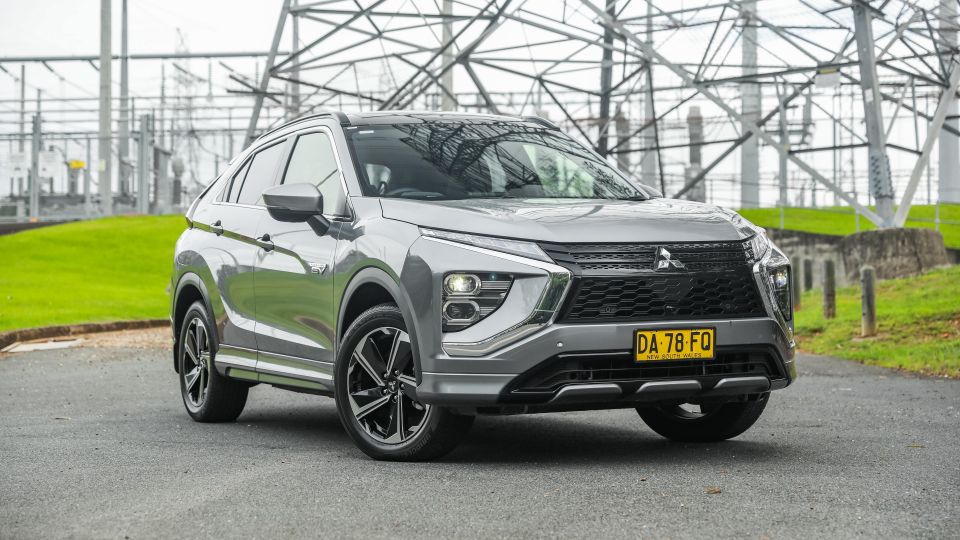
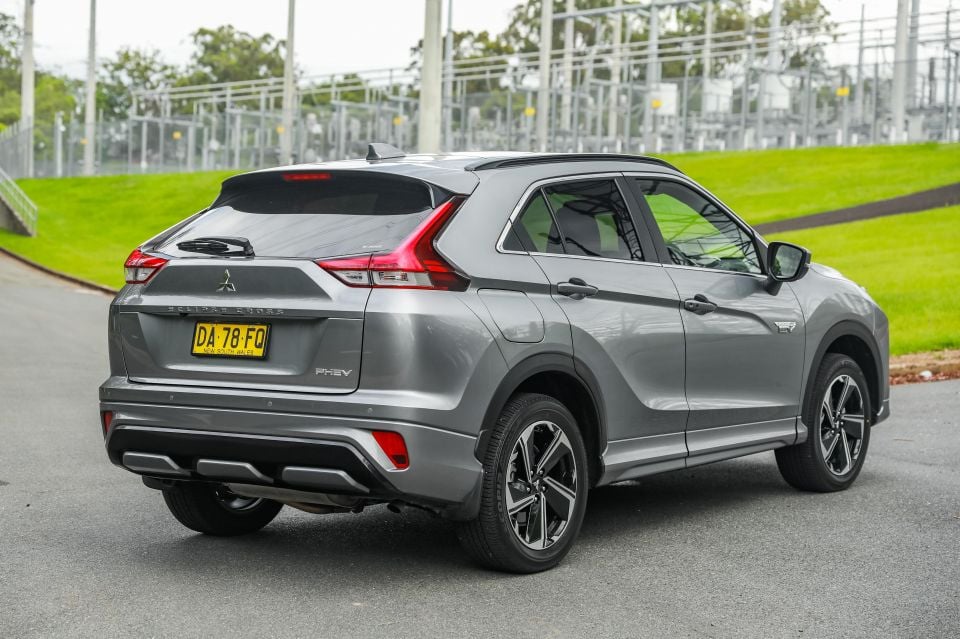

News Editor
New from
$30,290
excl. on-roads

News Editor
New from
$30,290
excl. on-roads


News Editor
New from
$30,290
excl. on-roads

News Editor
New from
$30,290
excl. on-roads
Quickly see how this car stacks up against its competition. Select any benchmark to see more details.
Where expert car reviews meet expert car buying – CarExpert gives you trusted advice, personalised service and real savings on your next new car.
“Oh, that actually makes a lot of sense!” – once you explain what a plug-in hybrid is to people and how it works, that’s the reaction you’ll typically get.
Unfortunately for those automakers that offer the technology, a lot of punters haven’t heard of plug-in hybrids (PHEVs) or don’t understand how they work. Mitsubishi has admitted as much.
Nevertheless, it has expanded its plug-in hybrid range with the 2022 Eclipse Cross Plug-in Hybrid EV. You can’t miss those enormous badges on its flanks, with Mitsubishi dropping its use of the inscrutable (to many) PHEV name for this lengthy but more informative moniker.
Most importantly, it contains those two letters everybody seems to know: EV.

With the next-generation plug-in Outlander due in 2022 expected to go up in price, the Eclipse Cross Plug-in Hybrid EV (we’ll just say PHEV for short) helps fill that gap. It’s based on the regular Eclipse Cross, one of the larger small SUVs on the market.
Commendably, Mitsubishi has been at the plug-in hybrid game since 2014 in Australia. Meanwhile, companies like Audi, Toyota and Volkswagen withhold their PHEVs from Australia, which they say is due to the demand for these models in markets like Europe.
The core idea of a plug-in hybrid makes so much sense to so many Australians. Depending on the length of your commute, you could charge your PHEV overnight at home and drive to and from work emissions-free. And if you do run out of charge, you’ve got a petrol engine to fall back on, which makes a PHEV perfect for somebody who wants to do the occasional long trip but suffers from range anxiety.
The only handicap to greater PHEV adoption, besides the lack of awareness, is the price.
We tested the top-spec Exceed PHEV, priced at $53,990 before on-road costs. That’s a substantial $12,500 more than an identically-specified, all-wheel drive Eclipse Cross Exceed.
Rivals are few. The MG HS Plus EV plug-in hybrid is priced at $47,990 drive-away, while Ford’s repeatedly delayed Escape ST-Line PHEV is now set to arrive in the second quarter of 2022, priced at $52,490 before on-roads.
Kia’s recently introduced (but soon-to-be replaced) Niro PHEV is also similarly priced, at $46,590 before on-roads for the S and $50,490 before on-roads for the Sport. They’re currently being offered for $49,990 and $53,990 drive-away, respectively.
It’s worth noting that none of these rivals are all-wheel drive like the Eclipse Cross. The closest thing to an AWD rival is the Mini Countryman Hybrid, priced at $70,182 drive-away,
The Exceed comes standard with solid white paint, with Lightning Blue, Black, Sterling Silver and our tester’s Titanium costing $740 extra. White Diamond and Red Diamond prestige finishes are an extra $940.
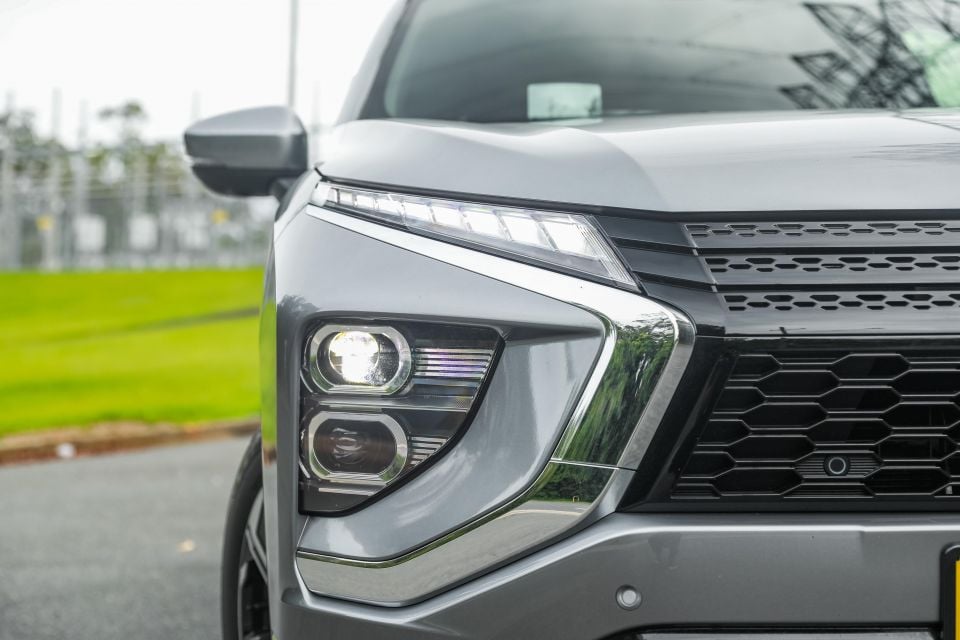

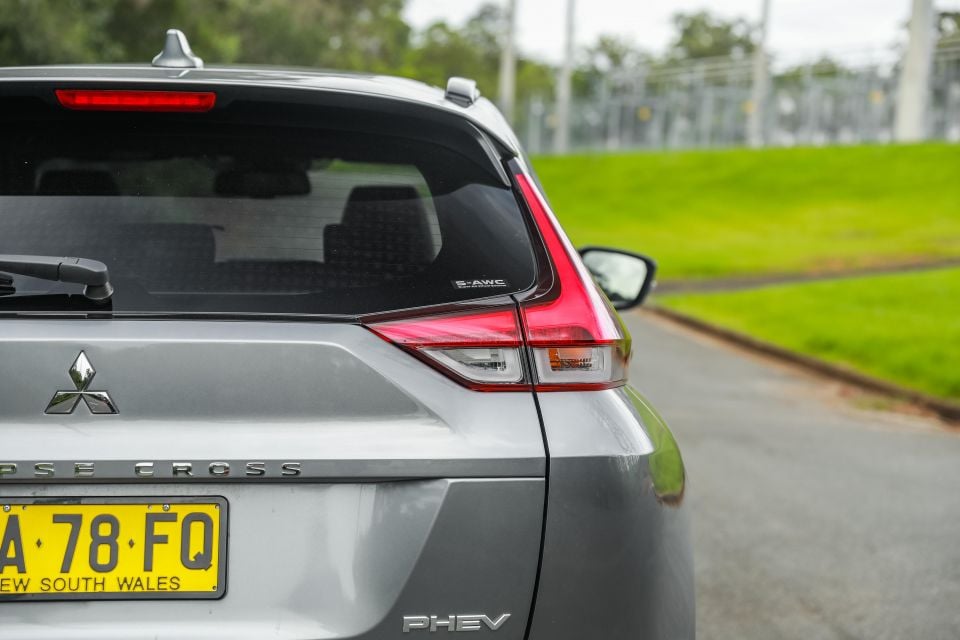
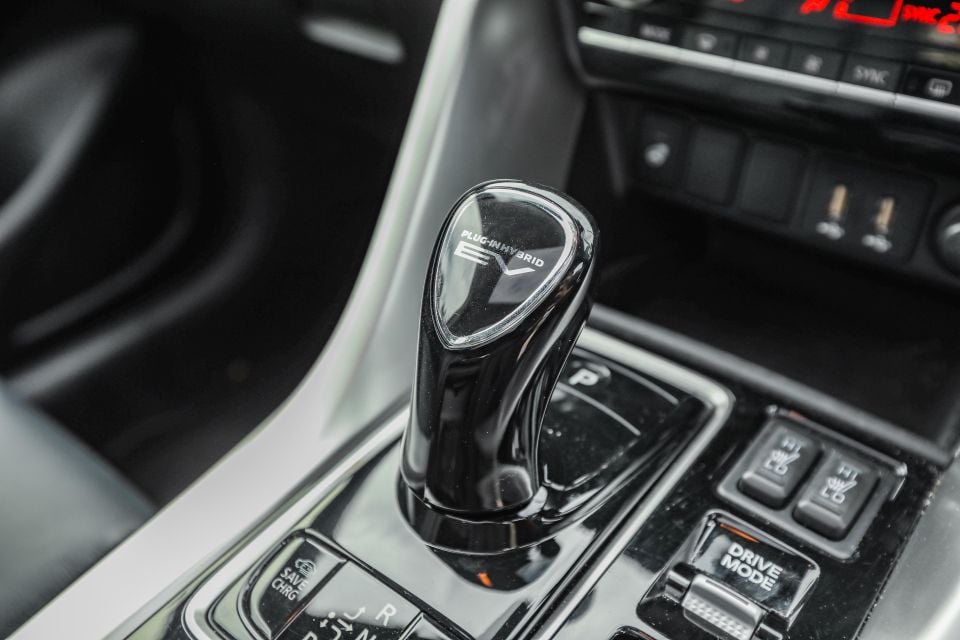
Buy your new car without the stress. It's fast, simple and completely free.

Great service from Travis and team, second time I have used this business would not hesitate to recommend them to anyone
Craig C.
Purchased a Ford Ranger in Sunshine Coast, QLD
CarExpert helped Craig save thousands on his Ford Ranger, now let us save you on your next new car.
Find a dealEclipse Cross Plug-in Hybrid Exceed highlights:
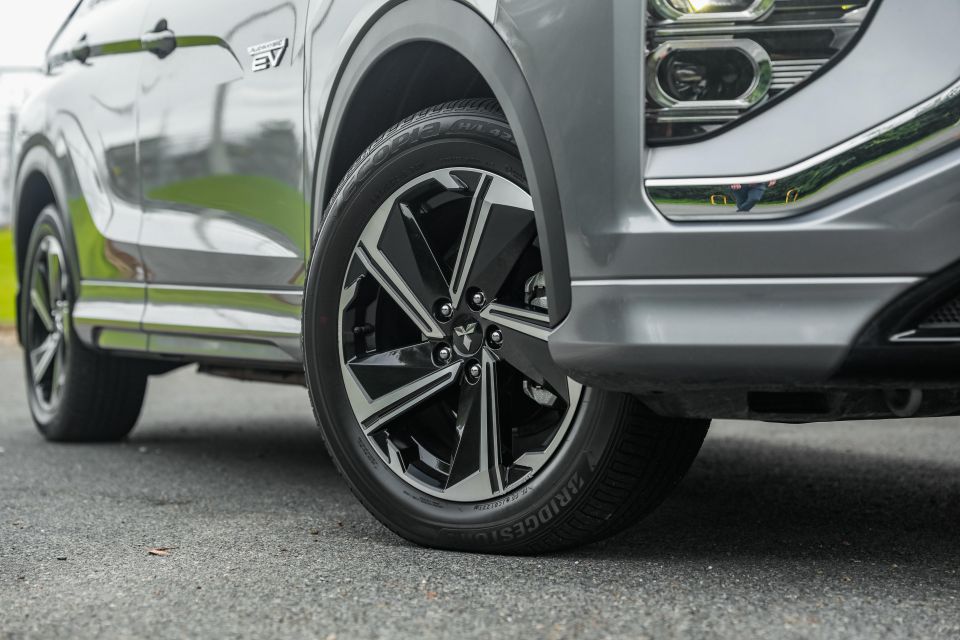
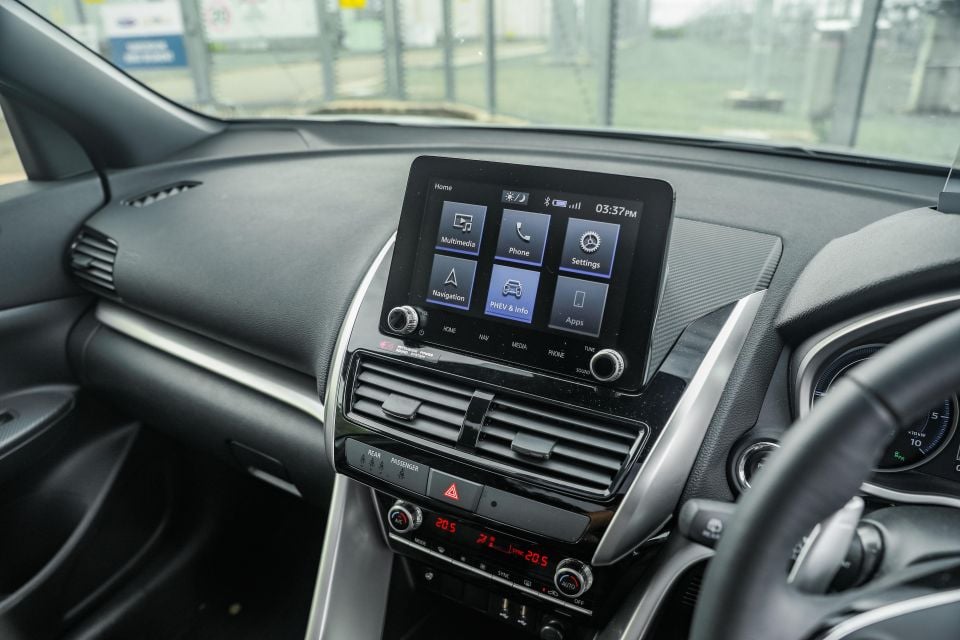
That’s in addition to features found in lesser Eclipse Cross PHEVs, which include:
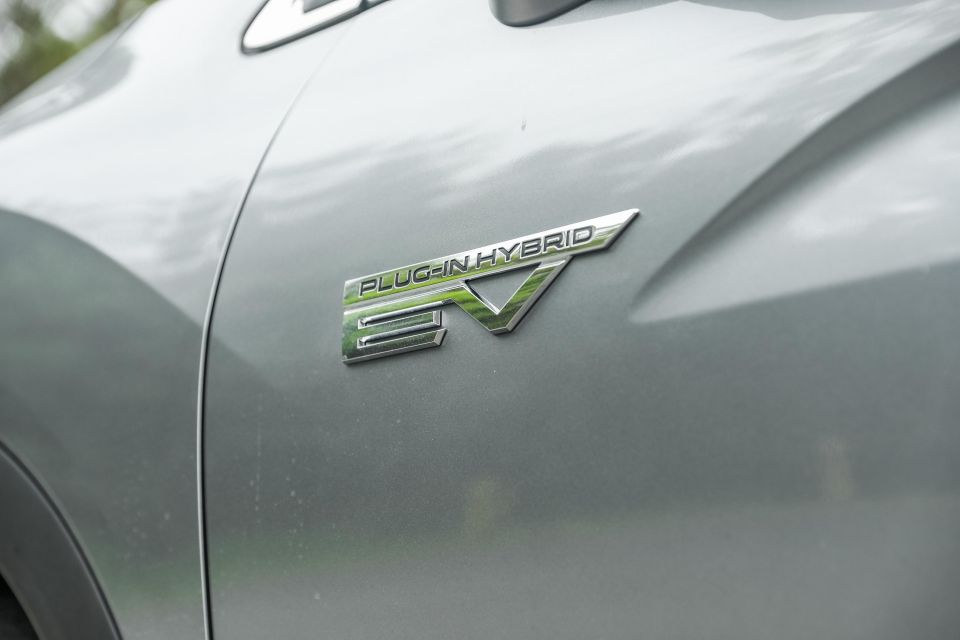
All grades also work with a smartphone app that allows you to remotely check the car’s status, location, charge schedule, or pre-engage the climate control and headlights.
The plug-in MG HS is not only cheaper, it also has more equipment. That includes a proper panoramic sunroof, a 12.3-inch digital instrument cluster and a power tailgate.
The Eclipse Cross does, however, pack more features than the Niro PHEV Sport.
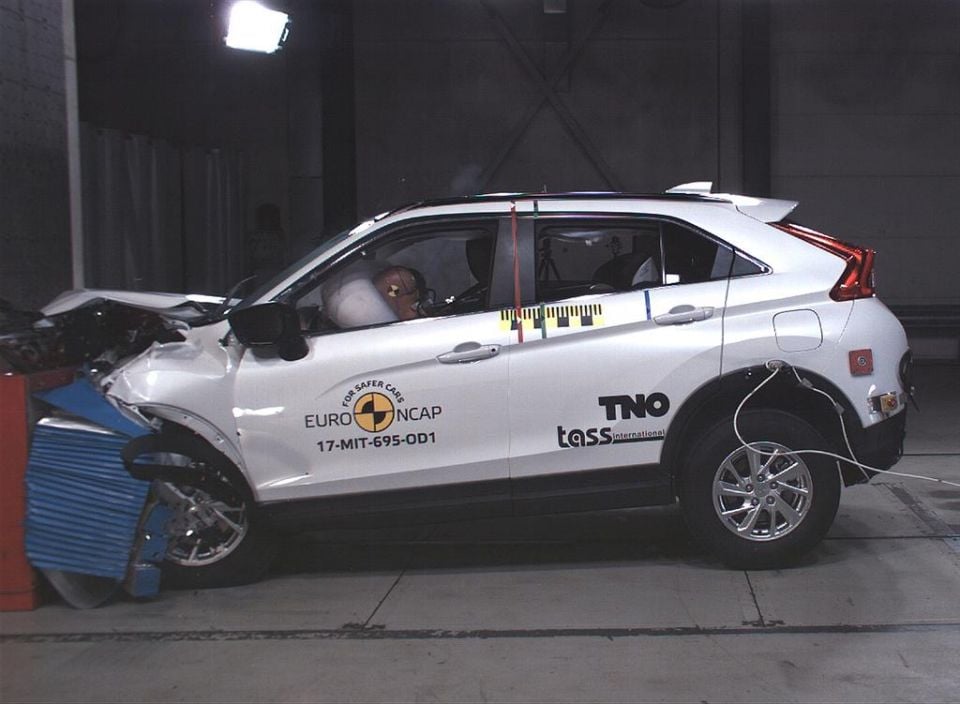
All Eclipse Cross models, including the PHEV, hold a five-star ANCAP crash rating based on 2019 testing.
The crossover received a score of 97 per cent for adult protection, 78 per cent for children, 80 per cent for pedestrians, and only 58 per cent for safety assist features.
Standard safety equipment includes:
The AEB system uses a camera and a radar. It can detect vehicles at speeds of 5-180km/h and pedestrians at 5-65km/h and apply the brakes accordingly.
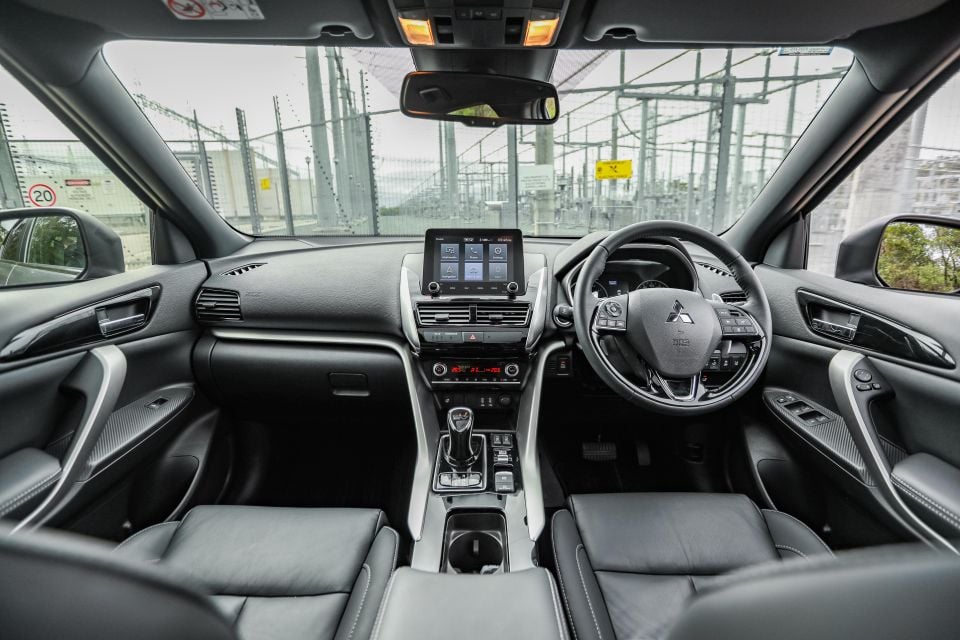
For a model that received a substantial exterior refresh, the Eclipse Cross’s interior is disappointingly familiar. That’s exacerbated by the PHEV’s higher price.
The layout of the dashboard looks modern, with the tablet-style touchscreen so in vogue and a minimalist centre stack. Material quality, too, is largely good, with a decent headliner, soft-touch plastics on the dash and front doors, and leatherette inserts on all the doors. Mitsubishi’s classic, oversized metal paddles are also present and accounted for.
Some materials don’t feel up to snuff, though. The leather on the seats looks like LINO – that is, leather in name only. The column stalks also feel brittle and lack damping. They’re not quite Jeep Compass-bad, but they make an annoying ‘clack’ when used.
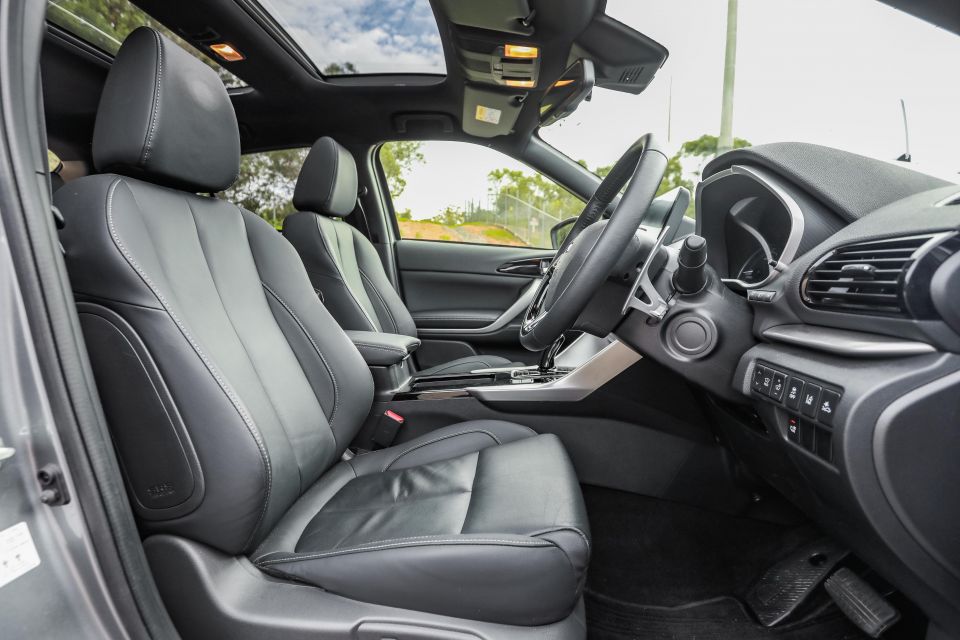

Some pieces from the Mitsubishi parts-bin are also showing their age, like the ugly heated seat controls that look straight outta the 1990s.
What really lets the Eclipse Cross PHEV down, though, is the technology. That touchscreen is a decent 8.0-inch unit – hardly the largest anymore, but competitive – but it runs Mitsubishi’s depressingly dated infotainment system.
The navigation looks straight out of a cheap TomTom you’d plug into your cigarette lighter, while the menu screens look old-hat and even the warning screen on start-up is strangely formatted. At least there’s Android Auto and Apple CarPlay to keep these screens out of sight.
There’s a PHEV menu with various screens displaying the history of your energy and fuel usage, though some screens are overloaded with information you probably won’t need – there are more charts than a typical slide deck. The energy flow screen is neat, however, showing where the car’s motivation is coming from in real time.
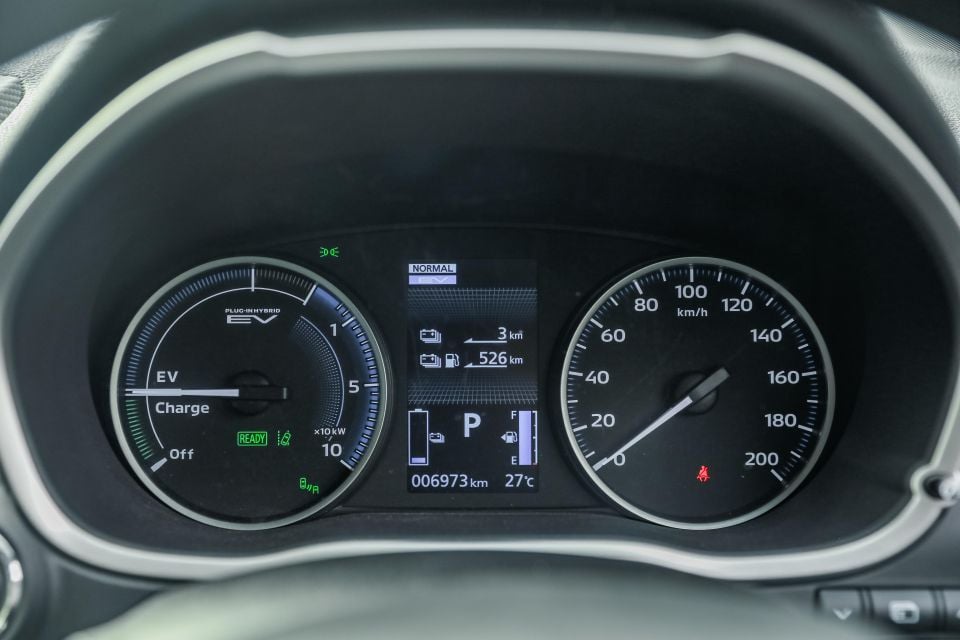
The instrument cluster has been swiped out of the outgoing Outlander PHEV, which means there are fairly legible gauges including a tachometer substitute that shows whether you’re using petrol or electric power. It also means an antediluvian trip computer screen that you control via buttons on the dashboard
Bizarrely for a car that emphasises economy, the screens that display your average economy are frustrating to use.
The whole trip computer set-up is just clunky and unattractive, and an easier to use and more attractive digital instrument cluster would be preferable.
While you’re at it, Mitsubishi, pop in the new infotainment system from the redesigned Outlander.
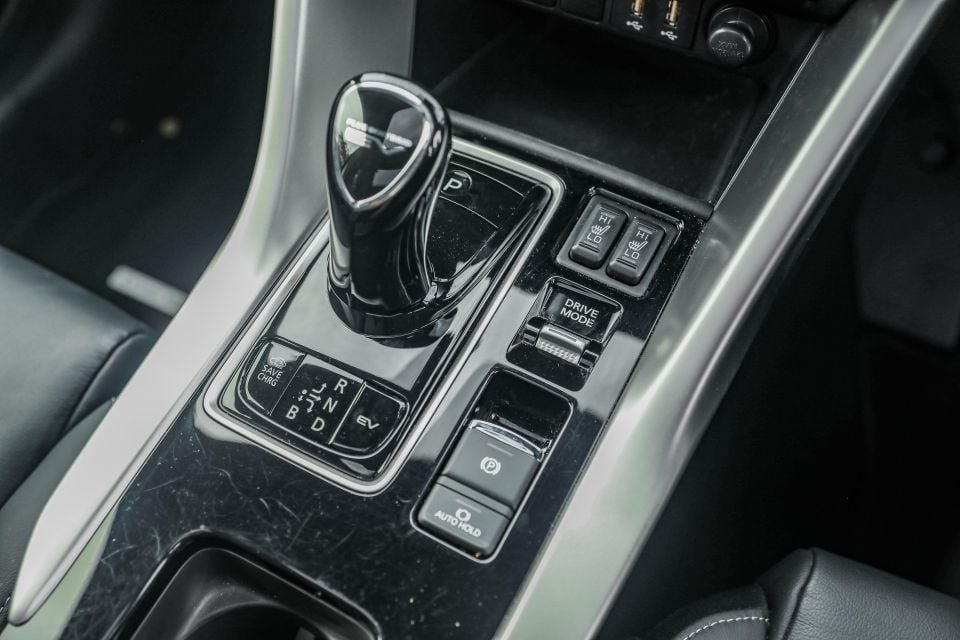
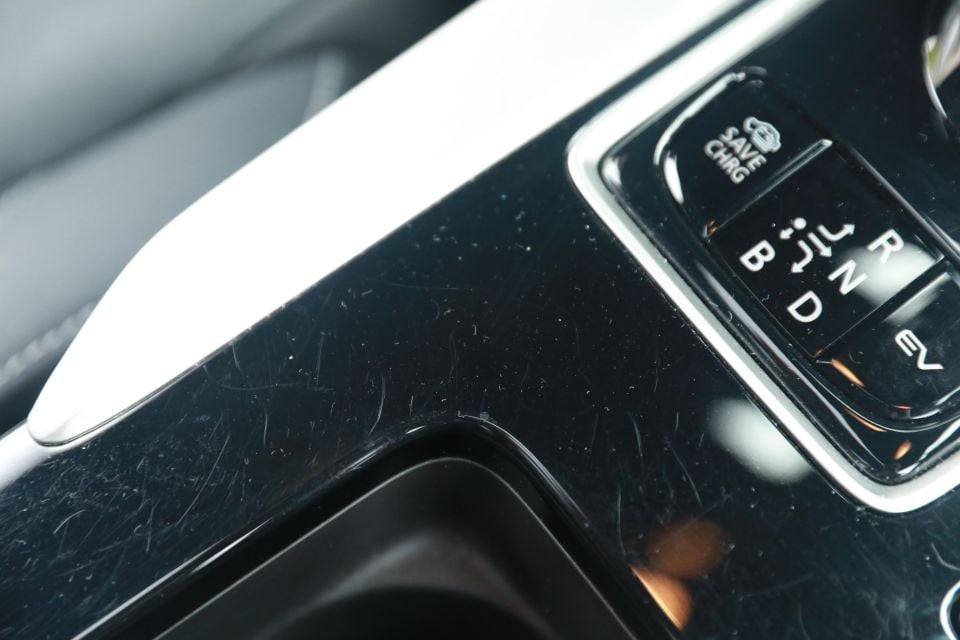
We had one complaint that was enough to spur me to writing an opinion piece: the abundance of piano black trim in the cabin, particularly on the centre console. Our tester had only 8000km on the odometer but its trim was already scratched and scuffed.
Cabin storage is quite good, with bottle holders in each door that can fit a 1L bottle, a well-sized centre console bin, and a glove compartment that’s both relatively spacious and has a separate shelf inside, allowing you to divide its contents. There’s no overhead sunglass holder, though.
At the base of the centre stack, you’ll find two USB-A outlets, though there’s no wireless charging.
The Eclipse Cross’ 2670mm wheelbase means there’s a good amount of legroom in the back seat, though it’s not quite mid-sized in terms of space. That applies especially to the headroom, which is downright disappointing.
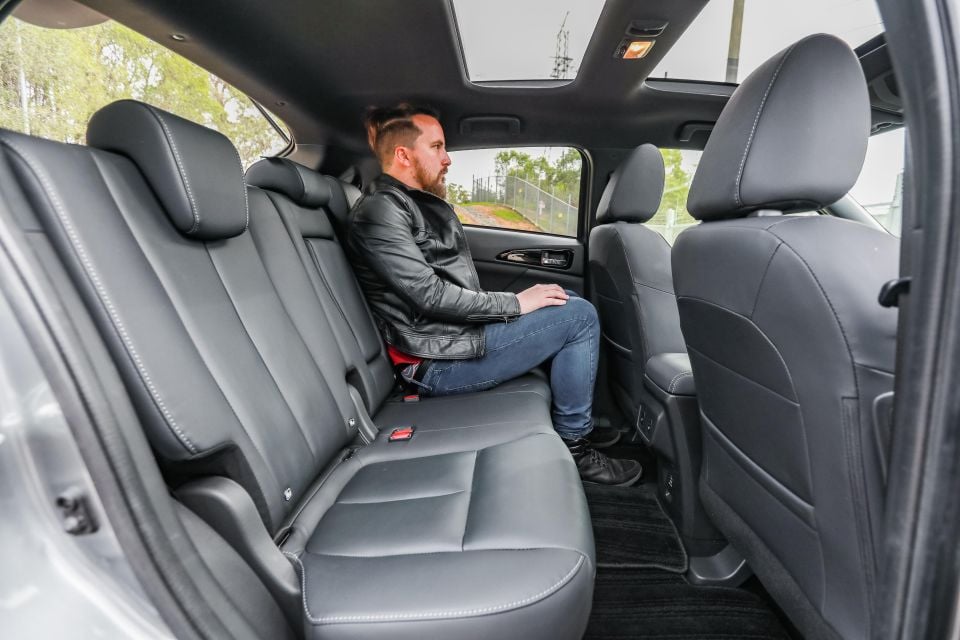
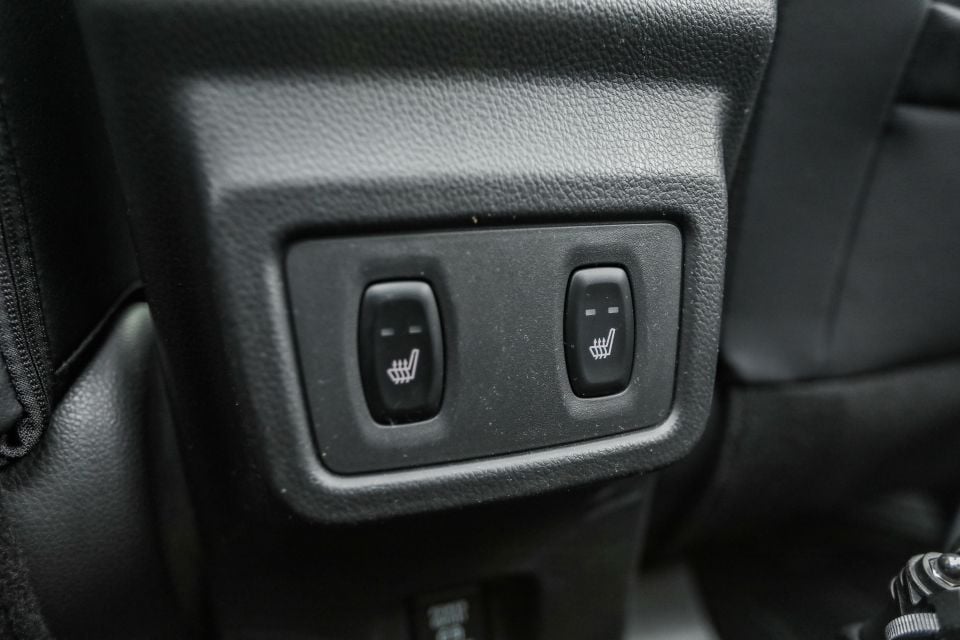
At 180cm, a pretty average height for an Australian man, my head (or at least my hair) was touching the roof. You can blame the sunroof for the lack of headroom. Instead of one large panoramic roof, or even a fixed panoramic glass roof like the smaller ASX, Mitsubishi has employed two sunroofs – one over the front, one over the back.
Kids have a new view to enjoy, but the dual sunroof approach doesn’t make the cabin feel quite as airy as how one large sunroof would.
So, short people and kids should at least be happy, right? Not quite. The rear bench is also extremely firm, in contrast with the fairly cushy front seats, while there are no rear air vents. Disappointingly, what could have been one of the best back seats in the small SUV segment is an also-ran.
In terms of amenities, there are heated outboard seats, a 12V outlet, a fold-down centre armrest with cupholders, as well as soft front seatbacks with map pockets attached.
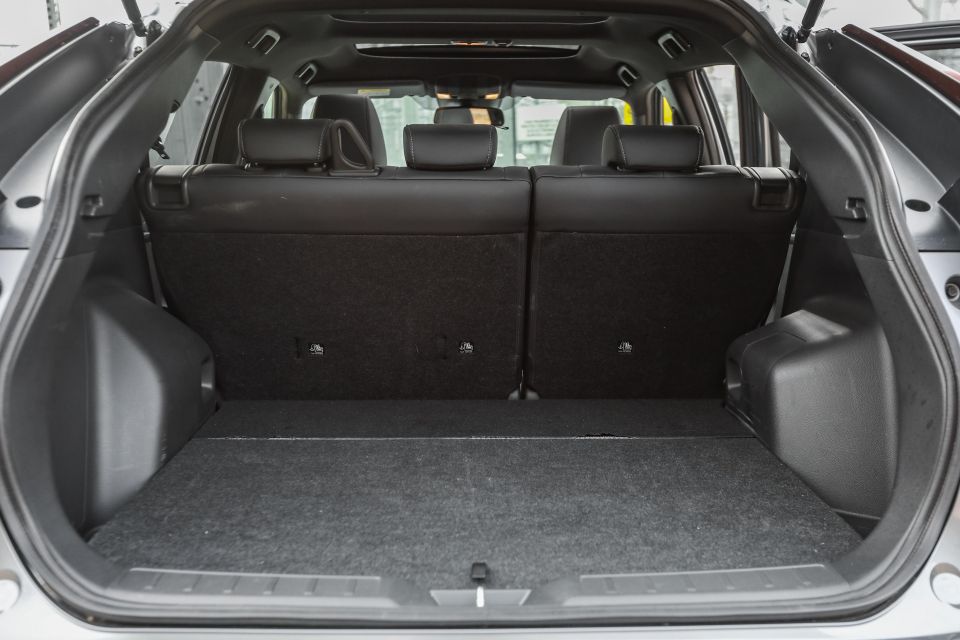
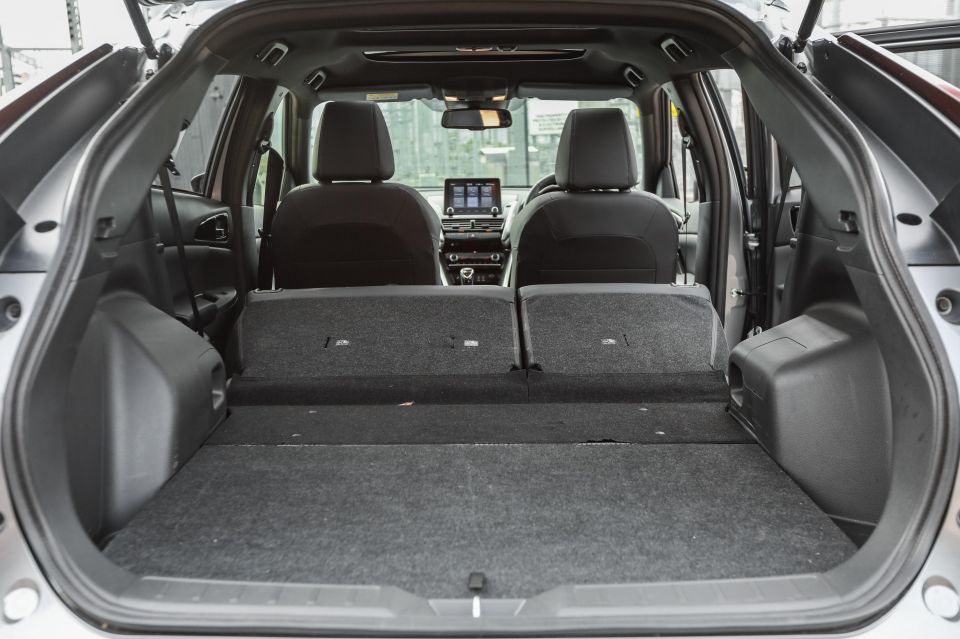
Open the boot and you’ll find 359L of space, measured to the top of the second-row seatback, which is down 46L on the petrol versions.
The placement of the battery pack means there’s no spare wheel whatsoever. Lift up the boot floor and you’ll find some storage nooks, inside which sit a charger and the tyre repair kit.
On either side of the boot floor, there are also small niches. Unfortunately the rear seats don’t fold completely flat.
Other complaints about the interior include low-resolution reversing and surround-view camera footage, air-conditioning that gets noisy at high fan speeds, and the presence of two button blacks on the centre stack – we’ll grin and bear it with a lower-spec model, but this is the top-spec Exceed.
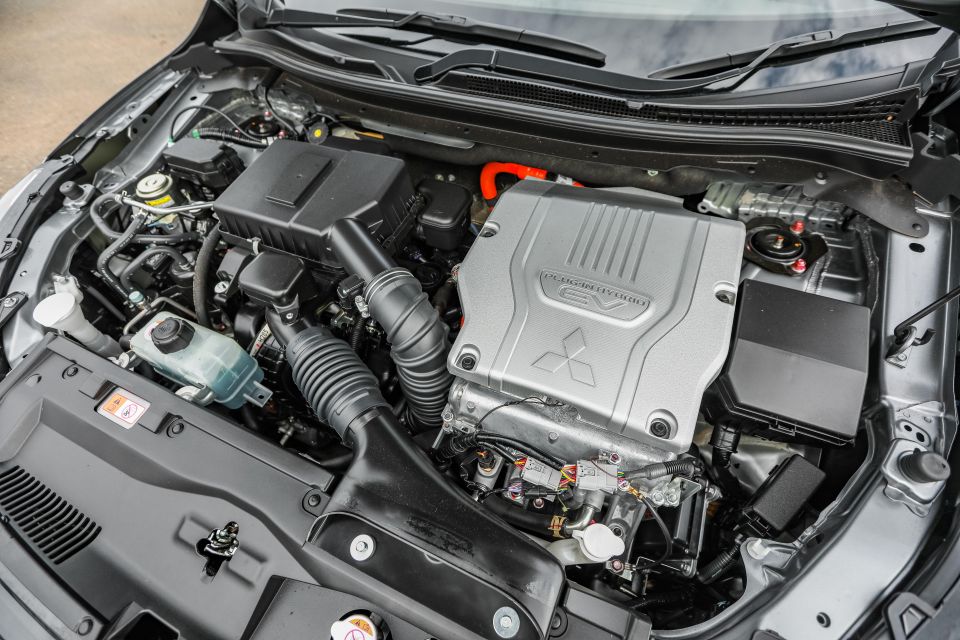
The Eclipse Cross PHEV borrows its plug-in hybrid powertrain from the outgoing Outlander PHEV, with the redesigned version of that model receiving an upgraded powertrain.
Power comes from a 2.4-litre naturally-aspirated four-cylinder petrol engine, mated with electric motors on each axle and a 13.8kWh lithium-ion battery pack.
The petrol engine makes 94kW of power and 199Nm of torque, the front motor makes 60kW and 137Nm, and the rear motor makes 70kW and 195Nm. There’s no combined system output figure available, nor an official 0-100km/h. However, in the Aspire one rung down, we clocked a 0-100 time of 9.0 seconds flat.

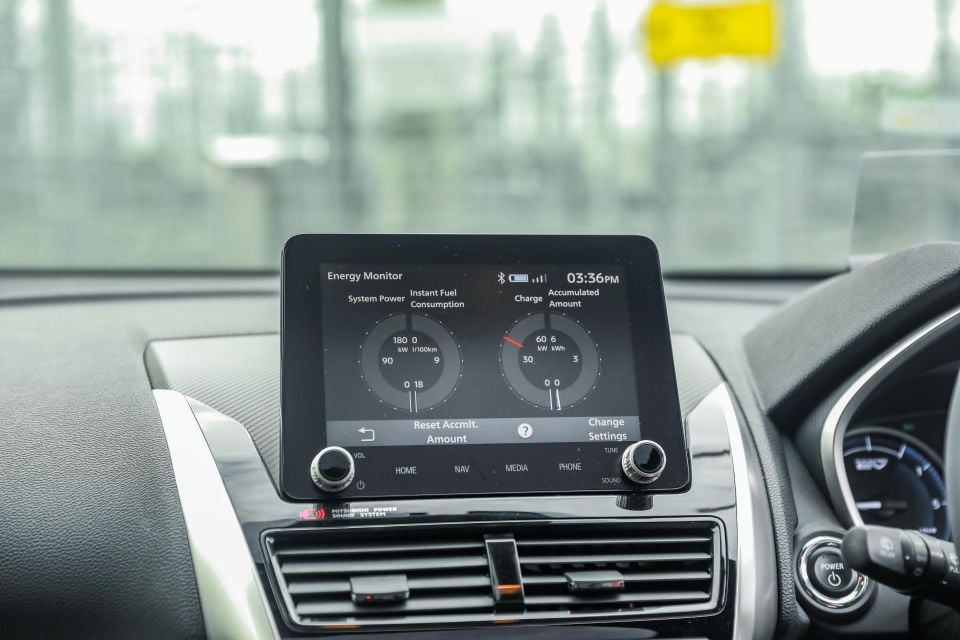
Where expert car reviews meet expert car buying – CarExpert gives you trusted advice, personalised service and real savings on your next new car.
If you plan on towing, the Eclipse Cross has a braked towing capacity of 1500kg.
The Eclipse Cross also features bi-directional charging, which can turn the Eclipse Cross into a generator and return power to a building if you connect a V2H-enabled device to its CHAdeMO DC port.
In 2022, Mitsubishi also plans to introduce a V2L feature to Australian-market Eclipse Cross PHEVs. Vehicles will come with a socket and an expected 1500W of output to power appliances away from the grid, which is handy if you’re going camping.
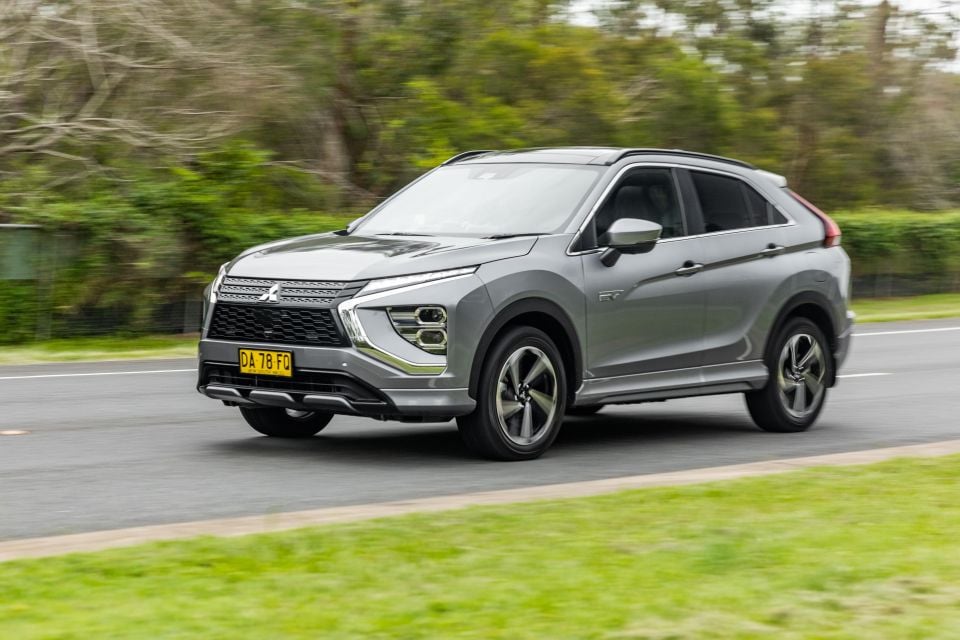
This is a much better application for the outgoing Outlander PHEV’s powertrain than that model.
The Outlander PHEV was cursed with a ride that was either ponderous in regular variants or harsh in the GSR. It was a case of mediocre chassis tuning letting down a stellar powertrain.
Though the Eclipse Cross is built on a version of that Outlander’s platform, it’s considerably better to drive, while its powertrain still deserves plaudits.
The ride quality is superior to the outgoing Outlander PHEV, with a smooth ride across most surfaces. It feels fairly softly-sprung, though some larger ruts see impacts being transmitted through the cabin which can give the ride a brittle feeling.
It also has a tendency to bob up and down a bit on undulating or uneven roads at higher speeds, though not to the extent you’ll need a Dramamine.

The steering has an appropriate amount of weight, but it feels a bit numb and doesn’t inspire confidence. That’s unfortunate, as the car’s S-AWC all-wheel drive system works well at getting power to the ground – as a week’s worth of driving in record wet weather can attest – and handling is competent.
We wouldn’t call the Eclipse Cross fun to drive, but it’s nicely balanced and body roll is fairly well controlled for an SUV. It doesn’t feel particularly light, given the extra weight of the battery pack – overall, it’s around 300kg heavier than the petrol Eclipse Cross Exceed – but it doesn’t lumber along either.
The best part of the driving experience, however, is easily the powertrain. The Eclipse Cross shifts between petrol and electric power seamlessly. You have to really stomp on the accelerator pedal to experience that trademark CVT rev flare, and only then is the transition between petrol and electric power particularly apparent.
You have the option to select a pure EV mode, otherwise the car will utilise the engine at constant speeds where it’s most efficient. It’s noticeably more electrified than a conventional hybrid, however, with the petrol motor tapped far less frequently.
With a charged battery, you can pull away from the lights and enjoy a similar kind of eerie quiet and effortless acceleration to a full-electric vehicle.
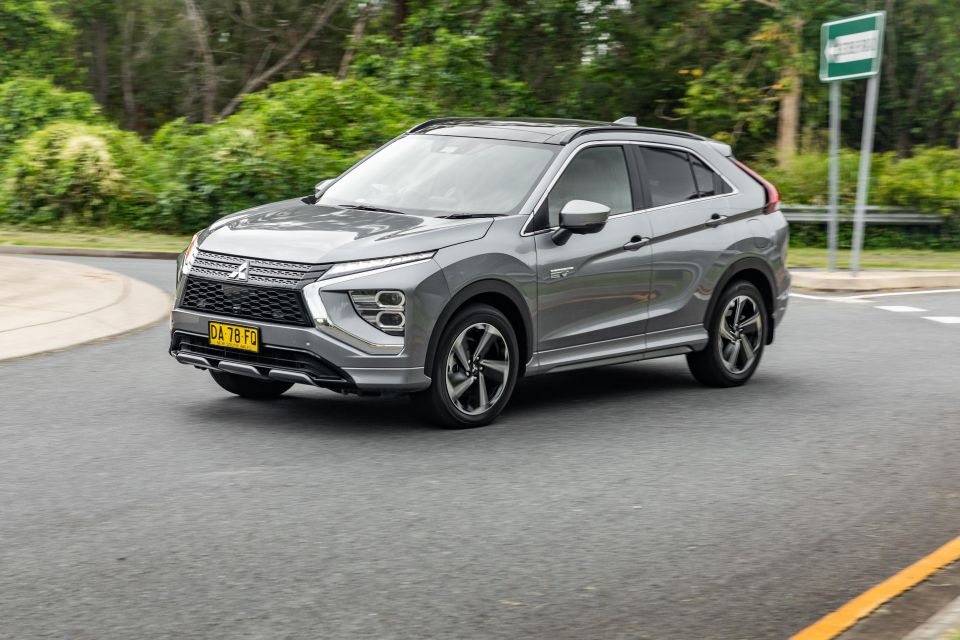
There’s a Save mode, which relies more on petrol power to conserve the battery – this is designed for places like Europe, where some cities have Low Emission Zones. There’s also a Charge mode which will use the engine to charge the battery to 80 per cent, though that feels like the equivalent of clearing land to make a nature reserve.
You can adjust the level of regenerative braking using the paddle shifters, though even on the strongest setting you won’t get the kind of one-pedal driving experience you can find with something like a pure-electric Nissan Leaf.
There are also selectable drive modes, adjusted via a switch on the centre console. Choose between Tarmac, Gravel, Snow, Normal and Eco, with torque delivery and the ESP adjusted accordingly – Tarmac, for example, ups the regenerative braking all the way and leans on the petrol engine more.
Again, you won’t find plug-in hybrid all-wheel drive SUVs from rival brands at this price point, so this is an edge Mitsubishi has over the competition.
We love the level of adjustability in the Eclipse Cross PHEV, though equally you can just leave it in all its default modes and be perfectly content.
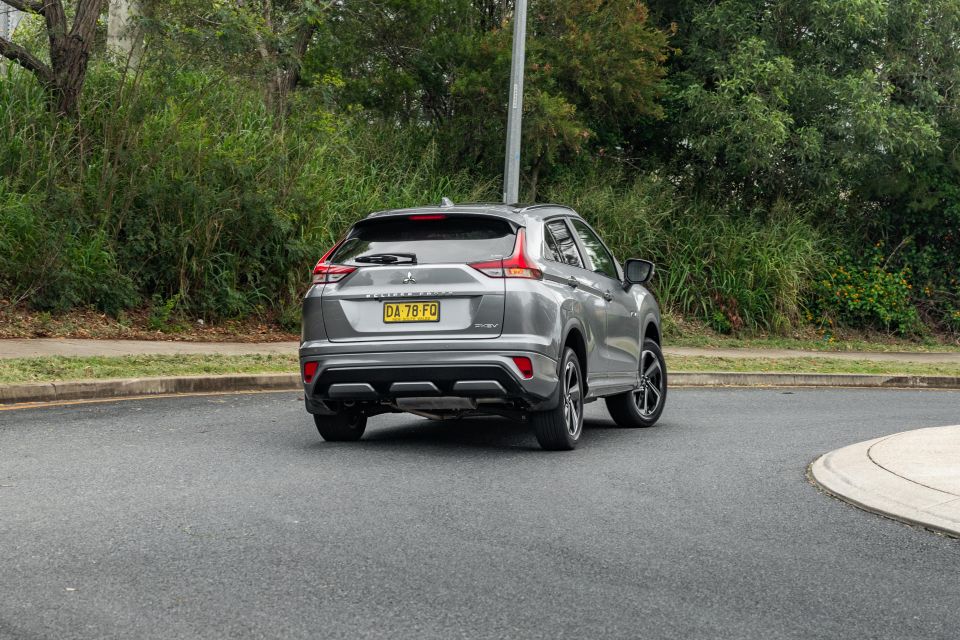
Even in EV mode, the cabin is quiet at highway speeds. Without an internal-combustion engine to drown out noises, the sound of the wind and the tyres is still kept largely at bay.
The active safety technology is hit-or-miss. There’s no lane-keep assist, only lane departure warning. The sensor for the AEB was deactivated twice – once during torrential rain (understandable) and once while driving through the Airport Link Tunnel (not so much).
Mitsubishi advertises a feature called Ultrasonic Mis-acceleration Mitigation System, which is designed to stop the car if you press the accelerator instead of the brake at low speeds. That sounds great in theory, but the one instance I experienced the system it was actually a hindrance.
I was on a street that intersected with a busy road, and I wanted to cross the road while there was a break in traffic. I pulled to a stop, and then hit the accelerator to make it through before cars came and the car stopped and a UMS warning flashed up on the instrument cluster screen. That’s just one example and you may find it to be useful in other scenarios, however I came away from that experience frustrated.
A chime “helpfully” sounds whenever you’re approaching a red-light or speed camera. It took me a bit of driving before I figured out what this annoying chime was, and it wasn’t immediately clear how to turn it off. Mitsubishi isn’t the only company that offers this feature, but their clunky instrument cluster and touchscreen interfaces make it more difficult to deactivate.
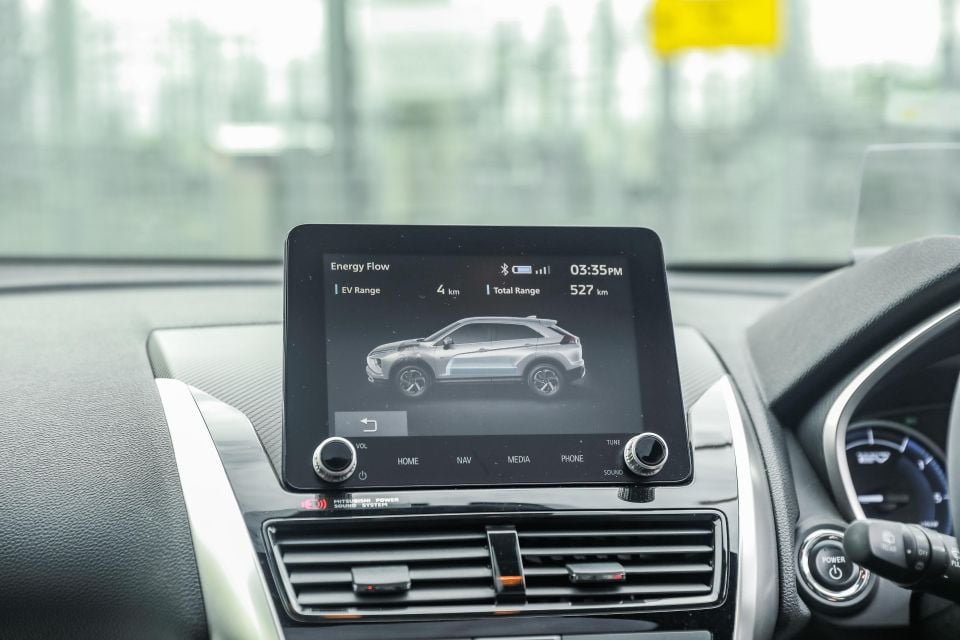
The official combined cycle rating is 1.9L/100km, but that’s reliant on a charged battery pack. Claimed range is 55km on the more lenient NEDC cycle, compared with 58km for the Niro and 52km for the HS. The latter, however, is on the stricter WLTP cycle.
Charged to 100 per cent, the Eclipse Cross’ trip computer claims 59km of range. We took it on our loop, which comprises a mix of inner-city, suburban and highway driving and measuring and is approximately 45km long. We managed approximately 40km on pure EV mode before the range metre read no more kilometres of electric charge were left.
In all, the energy usage at the end of this loop was 21.5kWh/100km, and our fuel economy was sitting at 0.8L/100km.
We did the same loop with no electric charge remaining, i.e. with the car acting as a normal hybrid, and averaged 7.6L/100km. We managed 7.3L/100km in an Outlander PHEV GSR on the same loop. For reference, a Toyota RAV4 hybrid has a claimed combined cycle figure of 4.7-4.8L/100km.
We found the electric range readout was always optimistic, at least at first. For example, upon charging it to full, we “lost” 3km of range driving a single block, and on the daily commute – around 7km in moderate traffic – we’d see a promised 50km of range drop to 37km.

The Eclipse Cross is covered by a 10-year, 200,000km warranty, provided you service it with Mitsubishi. If you service at an independent workshop, the warranty drops to five years or 100,000km.
The battery is covered for eight years or 160,000km.
Servicing intervals are 12 months or 15,000km. The first 10 services are capped as follows:
It’s worth noting that, while you’ll pay less to fuel it, the Eclipse Cross PHEV is both more expensive to buy and more expensive to service than the petrol Eclipse Cross. Per service, it works out an average of $100 costlier.
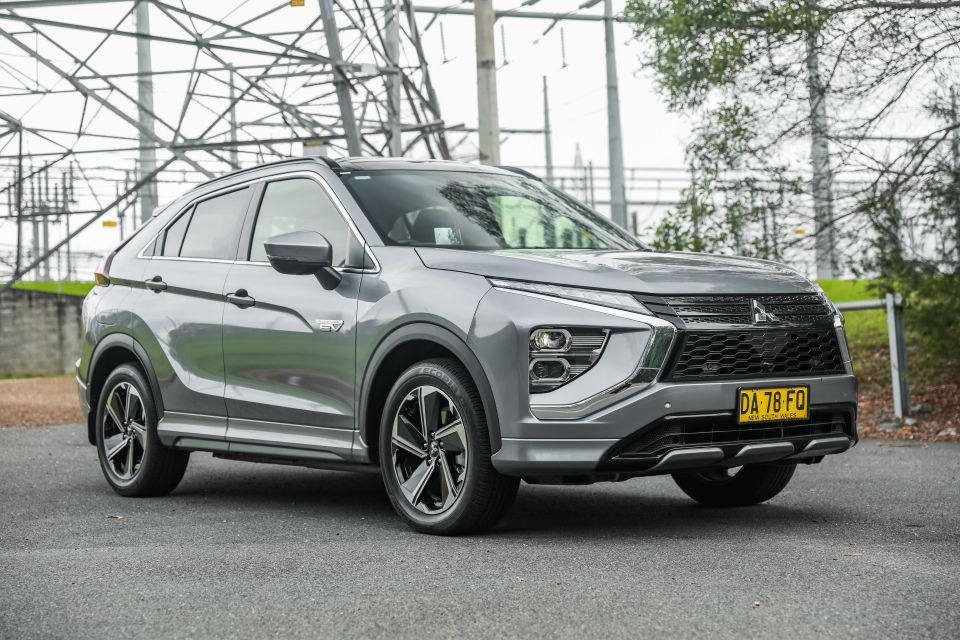
Plug-in hybrids make a lot of sense to people not yet ready to make the leap to an electric vehicle, particularly those who are waiting for longer-range EVs to help quell their range anxiety.
We’d argue the Eclipse Cross PHEV makes more sense than some other PHEV SUVs. Mitsubishi’s powertrain technology is proven at this point, while the presence of all-wheel drive gives it a point of differentiation over similarly-priced rivals. There’s also a 10-year warranty.
There’s no getting around the significant premium you pay over a regular petrol Eclipse Cross, however, and you wouldn’t want to be in Victoria where you’re also liable for the road user charge.
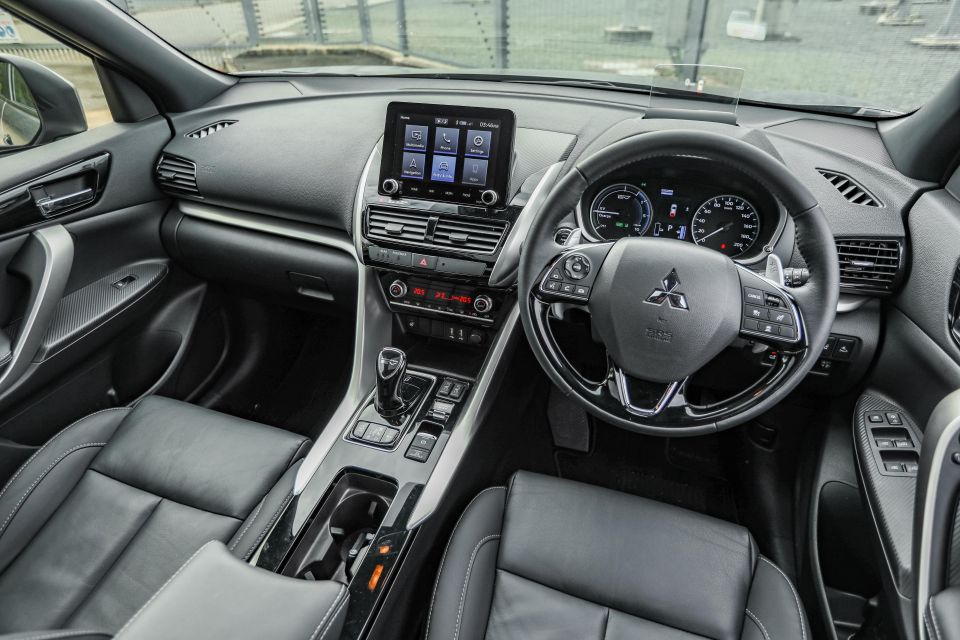
If you’re willing to pay the premium for this zero-emissions ability, we’d recommend stopping at the Aspire that costs $4000 less. You miss out on the head-up display (and, therefore, any digital speedometer), but the rest is a wash.
No dual sunroofs? Great, now you can carry tall passengers. No heated steering wheel or outboard rear seats? Unless you live in Thredbo, you’ll be fine. No satellite navigation? Trust me, you’ll be wanting to use your smartphone mirroring anyway.
Stepping down to the Aspire addresses one of our key criticisms of the interior, but there are faults endemic to all Eclipse Cross models. The infotainment and instrument cluster are dated and, while it rides better than the old Outlander PHEV, there’s still some finessing that could be done in this department.
We feel the greatest impediment to the PHEV, however, is the extra cost. While the ability to drive for brief spells with zero emissions is desirable, paying an extra $12,500 or so for the privilege isn’t.
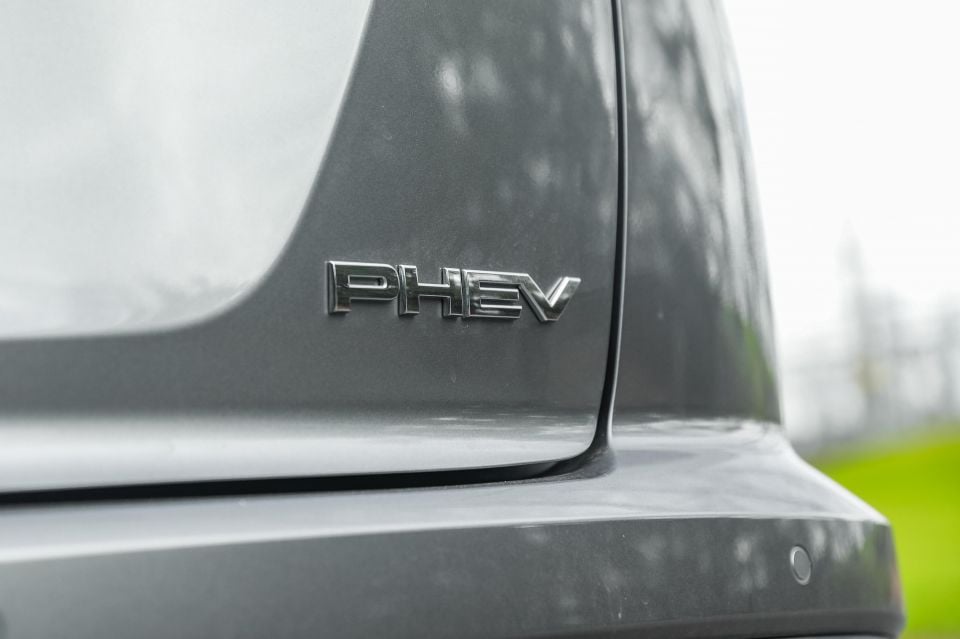
Click the images for the full gallery
Where expert car reviews meet expert car buying – CarExpert gives you trusted advice, personalised service and real savings on your next new car.
William Stopford is an automotive journalist with a passion for mainstream cars, automotive history and overseas auto markets.


William Stopford
6 Hours Ago


Max Davies
6 Hours Ago


Derek Fung
7 Hours Ago


Matt Campbell
14 Hours Ago


Ben Zachariah
1 Day Ago


Damion Smy
1 Day Ago